
The following is a list of converts to Hinduism from other religions or a non-religious background.

The following is a list of converts to Hinduism from other religions or a non-religious background.
This is list of converts from Indian-origin religions.

Chaitanya Mahaprabhu, born Vishvambhara Mishra, was an Indian Hindu saint from Bengal and the founder of Gaudiya Vaishnavism. Chaitanya Mahaprabhu's mode of worshipping Krishna with bhajan-kirtan and dance had a profound effect on Vaishnavism in Bengal.
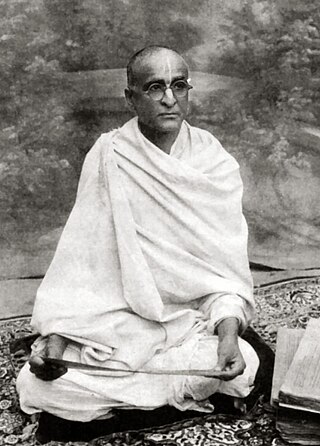
Bhaktisiddhanta Sarasvati, born Bimala Prasad Datt, was an Indian Gaudīya Vaisnava Hindu guru, ācārya, and revivalist in early twentieth-century India. To his followers, he was known as Srila Prabhupāda.

In the field of comparative religion, many scholars, academics, and religious figures have looked at the relationships between Hinduism and other religions.

Hinduism has been spread in Russia primarily due to the work of scholars from the religious organization International Society for Krishna Consciousness (ISKCON) and by itinerant Swamis from India and small communities of Indian immigrants. While ISKCON appears to have a relatively strong following in Russia, the other organizations in the list have a marginal presence in this country. There is an active Tantra Sangha operating in Russia. According to the 2012 official census, there are 140,010 Hindus in Russia, which accounts for 0.1% of the population of Russia.
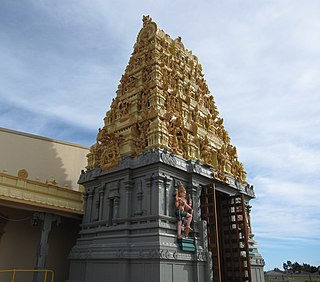
Hinduism is the third largest religion in Australia consisting of more than 684,002 followers, making up 2.7% of the population as of the 2021 census. Hinduism is the fastest growing religion in Australia mostly through immigration. Hinduism is also one of the most youthful religions in Australia, with 34% and 66% of Hindus being under the age of 14 and 34, respectively.
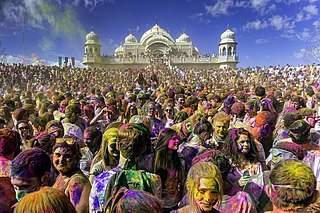
Hinduism is the fourth-largest religion in the United States, comprising 1% of the population, nearly the same as Buddhism and Islam. The majority of American Hindus are immigrants, mainly from India, Nepal, Sri Lanka, Bangladesh, and the Caribbean, with a minority from Bhutan, Pakistan, Afghanistan, Canada, Africa, Europe, Oceania, and other countries.

Hinduism is one of Sri Lanka's oldest religions, with temples dating back over 2,000 years. As of 2011, Hindus made up 12.6% of the Sri Lankan population. They are almost exclusively Tamils, except for small immigrant communities from India and Pakistan.

Hinduism is a minority religion in France that is followed by more than 121,312 people in France, which is nearly 0.2% of the nation's population. Most of the Hindus in France are mainly from the Sri Lankan Tamil diaspora and the Indian diaspora, though there are many Hindus from Nepal, Afghanistan, Mauritius and other nations. There are also Hindus who are citizens of France
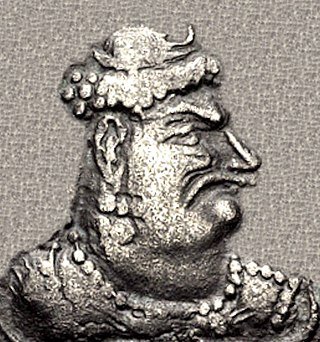
Mihirakula, sometimes referred to as Mihiragula or Mahiragula, was the second and last Alchon Hun king of northwestern region of the Indian subcontinent between 502 and 530 CE. He was a son of and successor to Toramana of Huna heritage. His father ruled the Indian part of the Hephthalite Empire. Mihirakula ruled from his capital of Sagala.
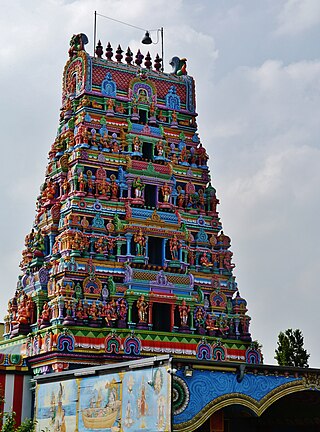
Hinduism is the fourth-largest religion in Germany. It is practised by around 0.1% of the population of Germany. As of 2017, there were approximately 130,000 Hindus living in the country.

Bhagat Pipa was a Rajput ruler of Gagaraungarh who abdicated the throne to become a Hindu mystic poet and saint of the Bhakti movement. He was born in the Malwa region of North India in approximately AD 1425.

Vaishnavism is one of the major Hindu denominations along with Shaivism, Shaktism, and Smartism. It is also called Vishnuism since it considers Vishnu as the sole supreme being leading all other Hindu deities, that is, Mahavishnu. Its followers are called Vaishnavites or Vaishnavas, and it includes sub-sects like Krishnaism and Ramaism, which consider Krishna and Rama as the supreme beings respectively. According to a 2010 estimate by Johnson and Grim, Vaishnavism is the largest Hindu sect, constituting about 641 million or 67.6% of Hindus.

Hinduism was first introduced by Sindhi settlers who migrated to Ghana after India was divided in 1947. It was spread to Ghana actively by Ghana's Hindu Monastery headed by Swami Ghananand Saraswati and by the International Society for Krishna Consciousness (ISKCON). Hinduism is one of the fastest growing religions in Ghana.
The Dashavatara are the ten primary avatars of Vishnu, a principal Hindu god. Vishnu is said to descend in the form of an avatar to restore cosmic order. The word Dashavatara derives from daśa, meaning "ten", and avatāra, roughly equivalent to "incarnation".
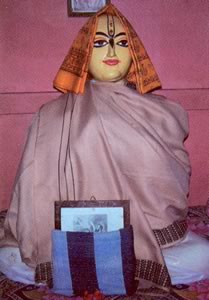
Haridasa Thakur was a Vaishnava saint known for playing a part in the initial propagation of Gaudiya Vaishnavism. He is considered to be a known convert of Chaitanya Mahaprabhu, along with Rupa Goswami and Sanatana Goswami. His story of integrity and faith in the face of adversity is told in the Chaitanya Charitamrita. It is believed that Chaitanya Mahaprabhu himself designated Haridasa as nāmācarya, meaning the 'teacher of the Name'. Haridasa Thakura was a devotee of the deity Krishna, and is regarded to have practised the chant of his veneration, the Hare Krishna mantra, 300,000 times daily.
The antahpura, also rendered anthapura, was the women's quarters or the royal harem of an Indian palace. It was the suite of apartments that were generally situated in a secluded portion of the palace, reserved for the women of the royal household. It consisted of the king's queens and concubines and was headed by his first queen, who was accorded the highest status.
The reception of Hinduism in the Western world began in the 19th century, at first at an academic level of religious studies and antiquarian interest in Sanskrit.
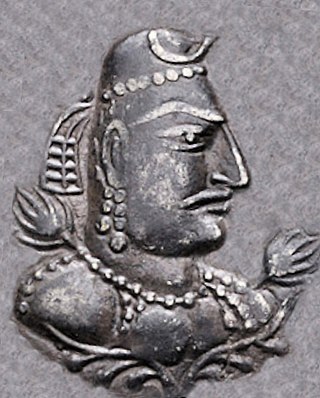
The Alchon Huns, also known as the Alkhan, Alchono, Alxon, Alkhon, Alakhana, and Walxon, were a nomadic people who established states in Central Asia and South Asia during the 4th and 6th centuries CE. They were first mentioned as being located in Paropamisus, and later expanded south-east, into the Punjab and Central India, as far as Eran and Kausambi. The Alchon invasion of the Indian subcontinent eradicated the Kidarite Huns who had preceded them by about a century, and contributed to the fall of the Gupta Empire, in a sense bringing an end to Classical India.
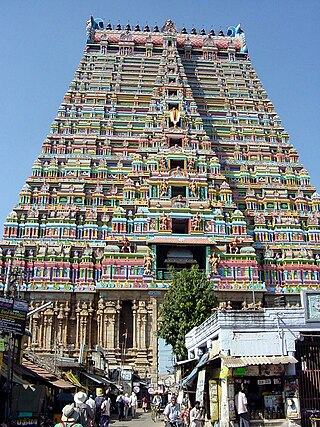
The Tirupalliyeḻuchi, also rendered Tirupalli Eluchi, is a work of Tamil Hindu literature written by Tondaradippodi Alvar, comprising ten hymns. The title of this work is a reference to the act of Suprabhatam, a Sri Vaishnava ritual, the prayer at dawn that is believed to rouse Vishnu from his sleep and protect the world. The work is part of the compendium of the hymns of the Alvars, known as the Nalayira Divya Prabandham.
{{cite web}}: CS1 maint: unfit URL (link)